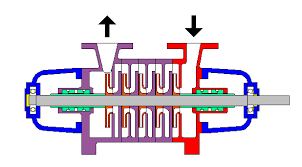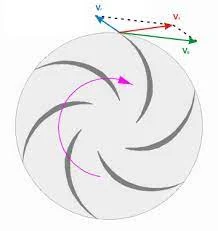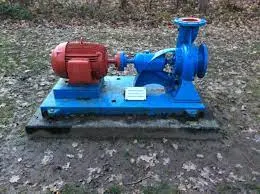Definition: A centrifugal pump sizing calculator is a tool used to determine the appropriate pump for a specific application. It considers various factors to ensure the pump meets the required flow rate and pressure head while operating efficiently.
Click the Translate button(see right) on this post to set your Own Language to understand more perfectly!!
Centrifugal Pump Sizing Calculator
Continue Definition:
Centrifugal Pump Sizing Calculator
A centrifugal pump sizing calculator is a tool used to determine the appropriate pump for a specific application. It considers various factors to ensure the pump meets the required flow rate and pressure head while operating efficiently.
Here's a breakdown:
Supporting Equations:
Flow Rate (Q): This represents the volume of liquid the pump moves per unit time. It's typically expressed in gallons per minute (GPM) or liters per second (L/s).
Head (H): This signifies the total energy the pump imparts to the liquid, including both pressure and elevation. It's commonly measured in feet of liquid (ft-lb/lbm) or meters of liquid (m).
The equation for head is: H = ΔP / ρg + Δz
Where:
ΔP (Delta P) is the pressure difference between the inlet and outlet of the pump (Pa)
ρ (rho) is the fluid density (kg/m³)
g is the acceleration due to gravity (m/s²)
Δz (Delta z) is the difference in elevation between the inlet and outlet (m)
Brake Horsepower (BHP): This represents the mechanical power required to drive the pump.
It's calculated using:
BHP = (ρ * Q * H) / ((η) * 746)
Where:
η (eta) is the pump efficiency (decimal)
Example:
Imagine you need a pump to transfer 50 GPM (0.0283 m³/s) of water to an elevated tank 20 meters higher (Δz). The pressure difference between the inlet and outlet is estimated to be 100 kPa (ΔP). You want to operate with a safety factor of 1.2 on the flow rate (meaning the pump should be able to handle 1.2 times the required flow).
Considering the safety factor, the target flow rate becomes: Q = 50 GPM * 1.2 = 60 GPM (0.034 m³/s)
Density of water (ρ) is approximately 1000 kg/m³
Acceleration due to gravity (g) is 9.81 m/s²
Head Calculation:
H = (ΔP / ρg) + Δz
H = (100,000 Pa / (1000 kg/m³ * 9.81 m/s²)) + 20 m
H ≈ 20.4 meters of liquid
BHP Calculation (assuming a pump efficiency of 70%):
BHP = ((1000 kg/m³) * 0.034 m³/s * 20.4 m) / ((0.7) * 746)
BHP ≈ 9.8 BHP
Result:
Based on these calculations, you'll need a centrifugal pump capable of handling at least 60 GPM at a total head of approximately 20.4 meters. The pump should have a brake horsepower rating greater than 9.8 BHP to account for inefficiencies.Calculating centrifugal pump sizing can offer several avenues for earning money:
1. **Pump Manufacturing and Sales**: Companies involved in pump manufacturing can utilize pump sizing calculations to design and produce centrifugal pumps tailored to specific flow rates, pressure requirements, and fluid properties. By offering a wide range of pump sizes and configurations, they can cater to industries such as water supply, wastewater treatment, oil and gas, mining, and manufacturing. Revenue can be generated through the sale of pumps, pump components, and customized solutions.
2. **Pump Distribution and Supply**: Distributors and suppliers of pumps can leverage pump sizing calculations to source and distribute pumps from manufacturers to meet the needs of their customers. By providing expertise in pump selection and application, they can offer value-added services to industries such as construction, agriculture, industrial maintenance, and facilities management. Revenue can be earned through pump sales, distribution agreements, and aftermarket support services.
3. **Pump Installation and Maintenance Services**: Contractors and service providers specializing in pump installation, commissioning, and maintenance can use pump sizing calculations to ensure proper pump selection and performance. By offering services such as pump installation, testing, calibration, and preventive maintenance, they can help industrial facilities, commercial buildings, and municipal utilities optimize their pump systems for efficiency and reliability. Revenue can be generated through service contracts, project fees, and spare parts sales.
4. **Engineering Consulting**: Engineering firms and consultants can leverage pump sizing calculations to provide consulting services for system design and optimization. By analyzing fluid flow requirements, head losses, and system characteristics, they can offer recommendations for pump selection, sizing, and integration into overall systems. Revenue can be earned through consulting fees, engineering design services, and project management contracts.
5. **Energy Management Solutions**: Companies specializing in energy management and efficiency solutions can utilize pump sizing calculations to optimize energy consumption in fluid handling systems. By assessing pump performance, system configurations, and operating conditions, they can identify opportunities for energy savings and cost reduction. Revenue can be generated through energy audits, efficiency improvement projects, and performance-based contracts.
6. **Training and Education**: Educational institutions and training providers can develop courses, workshops, and certification programs on pump sizing, selection, and operation. By incorporating pump sizing calculations into their curriculum, they can offer learning opportunities to students, professionals, and industry practitioners. Revenue can be earned through course fees, workshop registrations, and educational materials sales.
7. **Software Development**: Developers can create software applications and tools for performing pump sizing calculations and analysis. These software solutions can offer features such as data input, calculation algorithms, graphical visualization, and reporting capabilities, catering to the needs of engineers, designers, and maintenance professionals. Revenue can be generated through software sales, subscriptions, and licensing fees.
Overall, the ability to perform centrifugal pump sizing calculations provides numerous opportunities for individuals and businesses to offer products and services across various industries, including manufacturing, distribution, construction, engineering consulting, energy management, education, and software development.
Do YOU Want To Earn Money In Various Ways, Click The Link & Explore Your Field of Interest!!!









